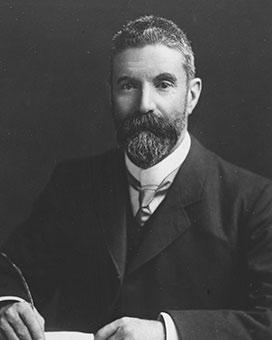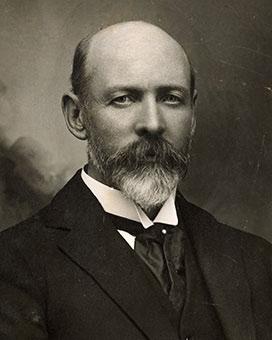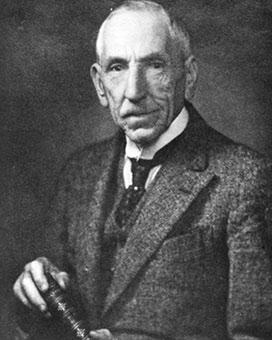On this page
1900 to 1909
29 Mar 1901: 1st elected to Federal Parliament
Andrew Fisher was elected as Member of Parliament for the seat of Wide Bay (Qld) in the 1st federal election.
13 Nov 1908: 5th Prime Minister
Andrew Fisher became prime minister after Labor withdrew its support from the minority Deakin government.
15 Dec 1908: 1st pensions
The Invalid and Old Age Pensions Act became law and set up a national aged pension scheme. The scheme began in July 1909 for men aged 65. Women aged 60 had to wait until December 1910, when invalid pensions were also introduced.
9 Mar 1909: New endeavour
The Endeavour, an Australian-built hydrographic survey vessel, was the Commonwealth's 1st seagoing ship. Its research work included locating fishing grounds off the east coast and in the Great Australian Bight. The ship and crew were lost at sea in 1914, while trying to rescue a member of the Mawson Antarctic expedition.
27 May 1909: Defeat in the House
The Fisher government was defeated by a coalition of Free Trade and Protectionist members led by Alfred Deakin. Having failed to obtain a dissolution of the House, Fisher was forced into Opposition and Deakin became prime minister.
1910 to 1919
29 Apr 1910: Prime Minister for the 2nd time
Fisher was sworn in as prime minister for the 2nd time after the 4th federal election in which Labor won a majority of seats. On 1 July 1910, the 4th Parliament was opened, the 1st time a prime minister had a majority in both houses.
30 Jun 1910: A flying machine
The government offered 5000 pounds for the invention of a military flying machine. Australia's 1st five military aircraft, ordered in 1912, were French and British designs. They were 1st used in 1914 at the new Central Flying School at Point Cook, Victoria, the nucleus of the Royal Australian Air Force in 1921.
1 Jan 1911: 2 new territories
The Northern Territory and the Federal Capital Territory were formally transferred to the Commonwealth. The territory for the new national capital included an area of 2360 square km near Yass, New South Wales, and a seaport at Jervis Bay.
26 Apr 1911: Referendum
This referendum included 2 proposals related to powers of the Federal Parliament over trade and commerce and nationalisation of monopolies, neither of which were carried.
17 Jun 1911: Suffrage in Britain
A week before the Coronation of King George V and Queen Mary, Margaret Fisher led Australian and New Zealand women in a London demonstration. Some 40,000 marched in support of a Bill granting women the right to vote. The British government did not enact the suffrage law until 1919.
22 Jun 1911: King George V and Queen Mary
Fisher headed an Australian delegation to London, for the coronation in Westminster Abbey and celebrations in the city.
31 Jul 1911: 5th Governor-General
Lord Denman was Governor-General until 18 May 1914.
02 Dec 1911: Australian Antarctic expedition
Douglas Mawson left Hobart in the Aurora for Macquarie Island. The expedition spent 3 years exploring overland and mapping some 1500km of the coast of Antarctica.
15 Jul 1912: A Commonwealth bank
The Commonwealth Bank began savings bank business in Victoria. It used post offices as agencies to extend facilities to other states. 6 months later, on 20 January 1913, it opened for general banking. The Prime Minister laid a foundation stone for the head office at Pitt Street and Martin Place, Sydney. It opened for business on 22 August 1916.
19 Sep 1912: Wattle for the Coat of Arms
A new Commonwealth Coat of Arms was granted. This followed moves to improve the original design by adding the states' arms and making the kangaroo and emu more lifelike. The government had declared wattle Australia's national flower and added it to the new design.
10 Oct 1912: Maternity Allowance Act
Under this 'baby bonus' law, mothers received 5 pounds on the birth of each child. Indigenous mothers and others not defined as citizens were ineligible for this payment.
2 Jan 1913: 1st Australian stamp
The Fisher government issued the Commonwealth penny stamp. It featured a kangaroo on a white map of Australia. Although later stamps reintroduced the King's head, the kangaroo design remained in use for some 40 years.
12 Mar 1913: 'I name this city Canberra'
The Foundation Day of the national capital was an elaborate ceremony in the empty paddock that was Capital Hill. Governor-General Lord Denman, Fisher and Minister for Home Affairs, King O'Malley, laid the foundation stones of a commemorative column. The column was never finished, and the base is now in front of Parliament House.
31 May 1913: 5th federal election
The Fisher government was defeated by the Commonwealth Liberal Party under Joseph Cook.
17 Sep 1914: Prime Minister for the 3rd time
Fisher was sworn in as Prime Minister for the 3rd time, after Labor's victory in the 6th federal election (and 1st ever double dissolution election) on 5 September.
9 Nov 1914: HMAS Sydney (I)
HMAS Sydney engaged the German cruiser SMS Emden off the Cocos Islands, sinking the enemy ship in the 1st naval action of the war. Australians celebrated the battle as a successful test of the new Royal Australian Navy.
25 Apr 1915: Anzacs land
The Australian and New Zealand forces landed on Gallipoli. They fought a desperate campaign against Turkish forces until 20 December, when some 80,000 men successfully withdrew.
12 Jul 1915: Wartime broadcasting
The Department of the Navy separated from the Defence Department and took control of broadcasting for the duration of the war. The departments merged again in 1921.
27 Oct 1915: Resignation
After being absent without explanation from Parliament for 3 sitting days, Fisher resigned as prime minister and treasurer, and also resigned his seat. 3 days later, William Hughes was elected leader of the Labor Party.
1920 to 1929
22 Oct 1928: Death
Fisher died at his London home, aged 66.





